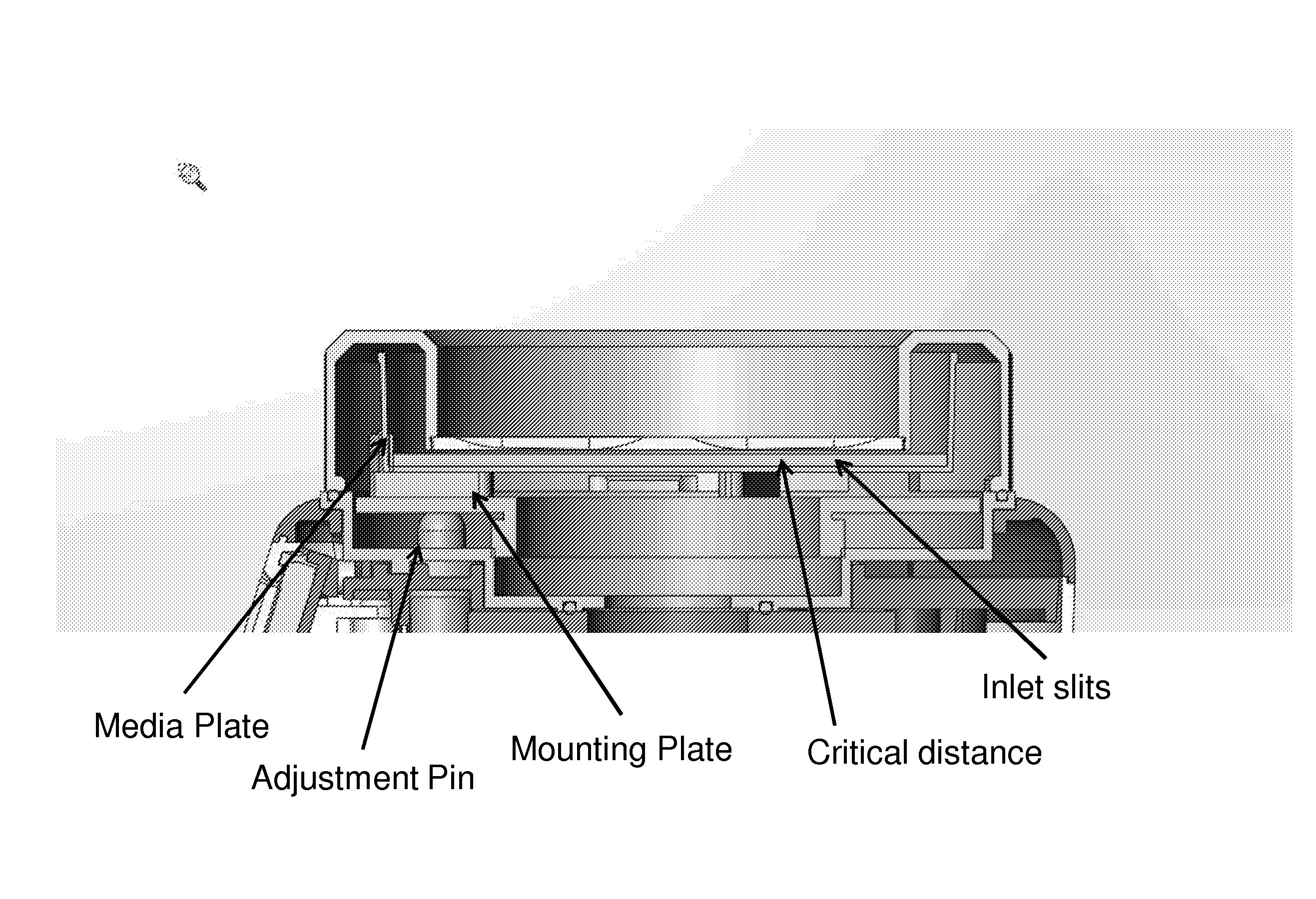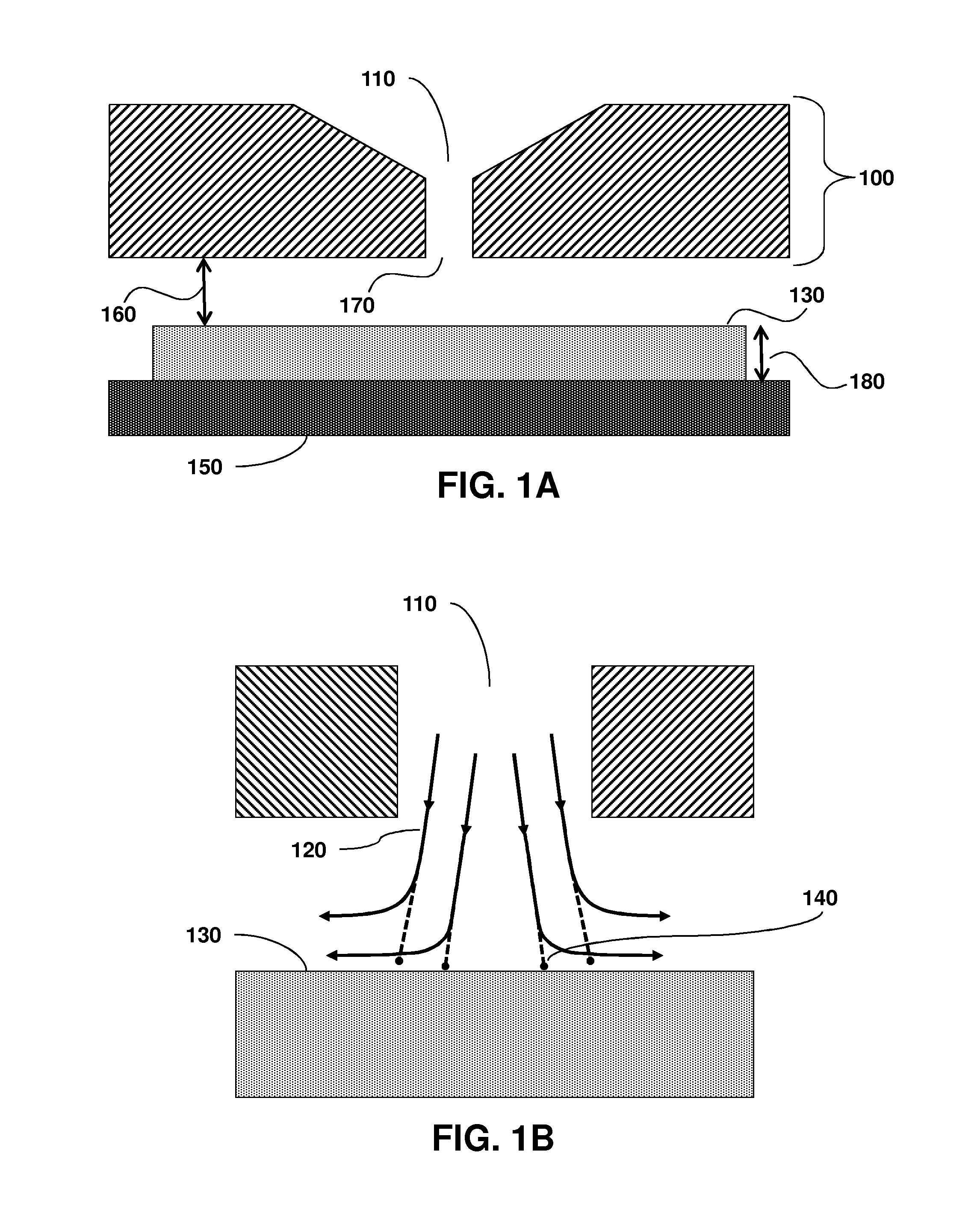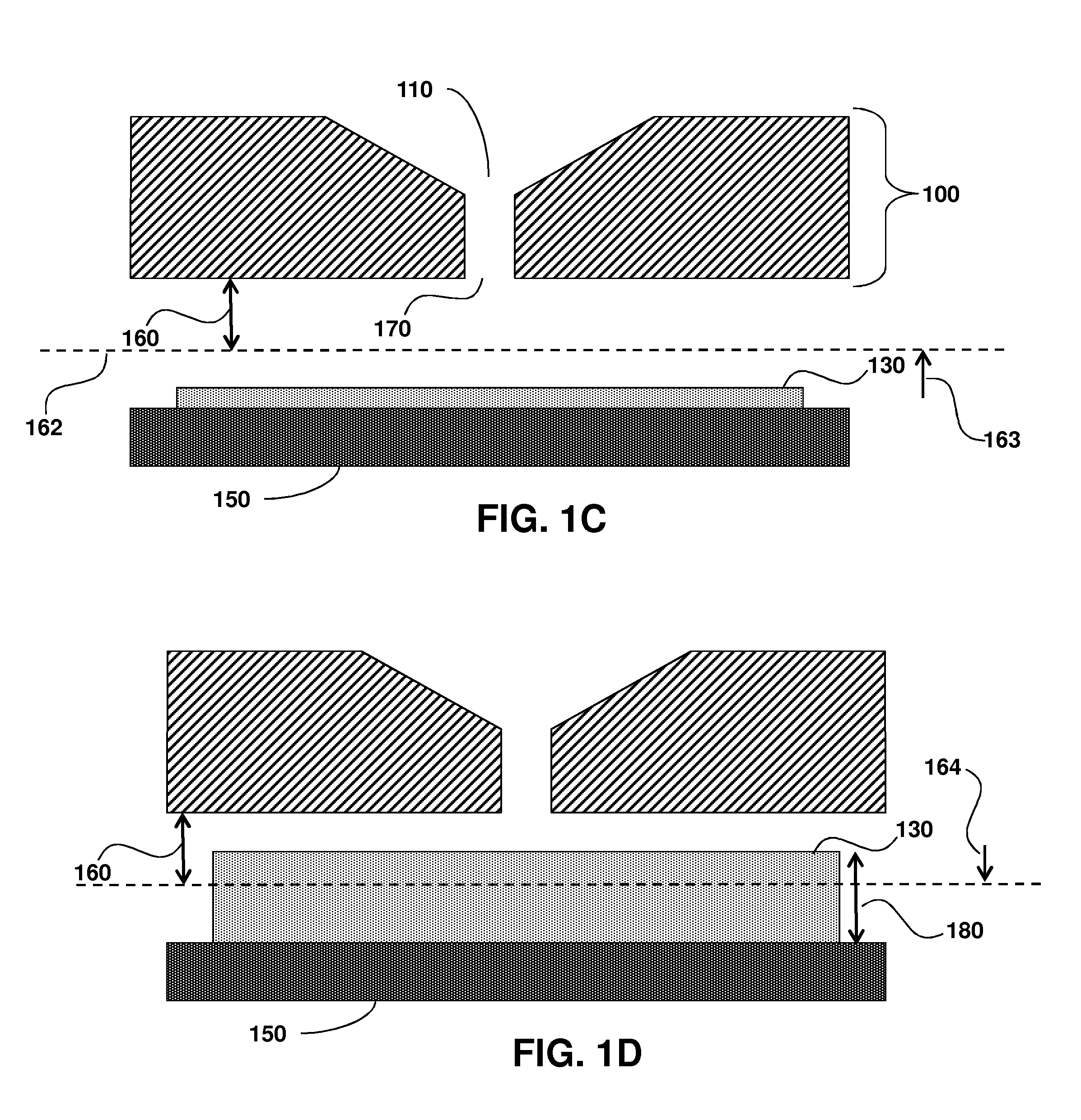Particle impactor with selective height adjustment
a technology of height adjustment and particle impactor, which is applied in the field of particle sampling, collection and analysis, can solve the problems of pharmaceutical products at risk of failing to meet the cleanliness level standards, real-time efficiency, and fabrication efficiency reduction
- Summary
- Abstract
- Description
- Claims
- Application Information
AI Technical Summary
Benefits of technology
Problems solved by technology
Method used
Image
Examples
example 1
Impactors
[0058]FIG. 1A provides a schematic diagram illustrating the general construction of a particle impactor and FIG. 1B illustrates an expanded view of a particle impactor to further illustrate the operational principal. As shown in these Figures, gas flow is directed through an intake aperture 110 in a sampling head 100 where it is accelerated towards an impact surface 130, which forces the gas to rapidly change direction, following flow paths or streamlines 120 under laminar fluid flow conditions. Due to their momentum, particles 140 entrained in the gas flow are unable to make the rapid change in direction and impact on the impact surface 130. In the embodiment shown in FIG. 1A and FIG. 1B, impact surface 130 is supported by impactor base 150. In embodiments, impact surface 130 comprises the receiving surface of a growth medium, such as agar, provided in a growth medium container or petri dish. Viable biological particles collected on the impact surface, for example, can sub...
example 2
Height Adjustment of the Agar Media to Position it in an Optimum Position for Physical and Biological Collection Efficiencies
[0060]When using an active air sampler, where the sampling media is located in relationship to the air inlet impacts, the ability of the device to collect the particles as well as allow them to survive the impaction and grow proper during the incubation cycle depends in part on the separation distance 160 between the impact surface 130 and the exit 170 from the air inlet 110 (see FIGS. 1A-1B)
[0061]Samplers on the market today typically use a fixed location where the sampling inlet is a certain distance from the plate support points. Depending upon the media plate used the actual distance to the media can vary from quite close to rather far away (see, e.g., FIGS. 1C-1D). This can lead to either organisms not being impacted on the media and flowing away with the air flow, such as for media that is underfilled or positioned with too high a separation distance 160...
PUM
 Login to View More
Login to View More Abstract
Description
Claims
Application Information
 Login to View More
Login to View More - R&D
- Intellectual Property
- Life Sciences
- Materials
- Tech Scout
- Unparalleled Data Quality
- Higher Quality Content
- 60% Fewer Hallucinations
Browse by: Latest US Patents, China's latest patents, Technical Efficacy Thesaurus, Application Domain, Technology Topic, Popular Technical Reports.
© 2025 PatSnap. All rights reserved.Legal|Privacy policy|Modern Slavery Act Transparency Statement|Sitemap|About US| Contact US: help@patsnap.com



